
Pseudomyrmecinae is a small subfamily of ants containing only three genera of slender, large-eyed arboreal ants, predominantly tropical or subtropical in distribution. In the course of adapting to arboreal conditions, the pseudomyrmecines diversified and came to occupy and retain a much wider geographic range.

Pseudomyrmex is a genus of stinging, wasp-like ants in the subfamily Pseudomyrmecinae. They are large-eyed, slender ants, found mainly in tropical and subtropical regions of the New World.
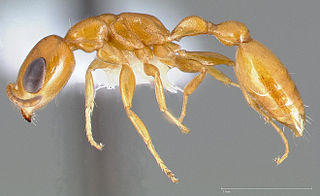
Pseudomyrmex pallidus is a species of ant found in the Nearctic realm with an extensive range throughout the southern United States to Central America.

Pseudomyrmex simplex is a species of ant in the family Formicidae.

Pseudomyrmex ejectus is a species of ant in the family Formicidae.

Pseudomyrmex apache is a species of ant in the family Formicidae.

Pseudomyrmex cubaensis is a species of ant in the family Formicidae.

Formica gagatoides is a species of ant in the family Formicidae. It is found in Europe.

Camponotus vicinus is a species of ant in the subfamily formicinae. C. vicinus is widespread throughout western North America, from Alaska, south to Mexico, and east to Texas and Manitoba. Unlike its wood nesting "carpenter ant" relatives, Camponotus vicinus is typically found nesting in the soil under stones and other objects. The giant ants in the 1954 film Them! are identified as C. vicinus, despite multiple anatomical differences, including the presence of a sting, which is absent in Formicine ants.

Pseudomyrmex elongatus is a species of ant in the family Formicidae.
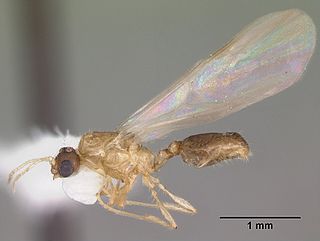
Solenopsis carolinensis, the thief ant, is a species of ant in the family Formicidae.

Formica integroides, also known as the Vinegar Ant, is a species of ant in the family Formicidae.
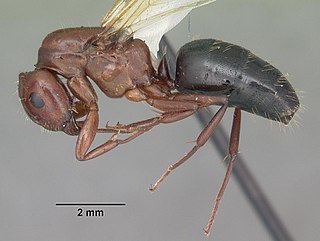
Camponotus discolor is a species of ant in the family Formicidae.
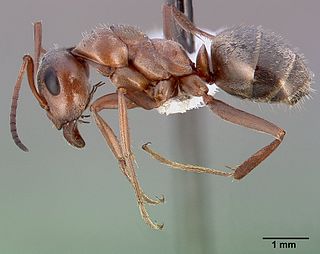
Formica aerata, the grey field ant, is a species of ant in the family Formicidae.

Myrmica incompleta is a species of ant in the family Formicidae.
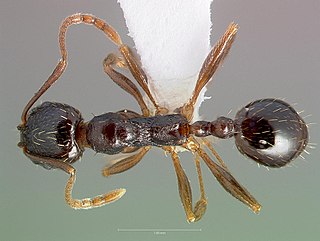
Aphaenogaster occidentalis is a species of ant in the family Formicidae.

Pogonomyrmex desertorum, the large seed harvesting ant, is a species of ant in the family Formicidae.

Odontomachus ruginodis, the rough-node snapping ant, is a species of ant in the family Formicidae.

Proceratium silaceum is a species of ant in the family Formicidae.




















